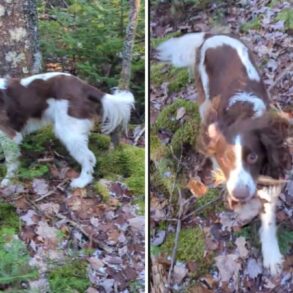Study design
The persistent efficacy over a period of 12 months (52 weeks) of fluralaner injectable suspension (Bravecto® 150 mg/ml powder and solvent for suspension for injection for dogs; Merck Animal Health, Rahway, NJ, USA; in the following referred to as Bravecto® injectable) at the recommended dose of 15 mg/kg body weight (BW) against R. sanguineus s.l. and C. felis in dogs was evaluated in a negative-controlled, randomised and partially blinded efficacy study. The investigational veterinary product (IVP, Bravecto® injectable) was administered subcutaneously as a single dose. Dogs were experimentally infested with both R. sanguineus s.l. and C. felis 2 days before treatment, 5 and 28 days after treatment, and then once a month over a 12-month period. A detailed study design is shown in Fig. 1. The study was performed in accordance with VICH guideline 9 “Good Clinical Practice” [22] and the European Medicines Agency’s (EMA) “Guideline for the Testing and Evaluation of the Efficacy of Antiparasitic Substances for the Treatment and Prevention of Tick and Flea Infestation in Dogs and Cats” [23].
Study dogs
Twenty-four purpose-bred female (n = 12, intact) and male (n = 12, neutered) Beagle dogs were obtained from a commercial breeder. Of these, ten females and ten males at the age of approximately 12 months with BW ranging from 7.5 to 11.7 kg (mean 9.5 kg) were included in the study. For inclusion, dogs had to be clinically healthy, approximately 12 months of age at study day (SD) 0, susceptible to R. sanguineus s.l. infestation based on pre-treatment tick counts (SD–7, see below) and not treated with fluralaner within the past 180 days or with other drugs with long- or short-acting activity within the past 90 days that could interfere with the establishment of experimental tick or flea infestations. All dogs were acclimatised to the husbandry conditions at the Institute for Parasitology, University of Veterinary Medicine Hannover, Germany, for 7 days prior to first assessments.
The study dogs were kept pairwise in environmentally controlled indoor compartments with adjacent outdoor runs accessible during daytime, allowing a view of a green area or the university’s campus. The indoor area was equipped with raised resting areas and toys, and the outdoor runs with concrete pipes, raised resting areas with stairs and toys for jumping, playing, resting and observing. During infestation only, dogs were kept individually by dividing the indoor compartment, which prevented physical but allowed audio-visual and olfactory contact. On all other days, dogs were kept in groups of two dogs per group. The dogs received an age-appropriate commercial dog diet at recommended rates and water ad libitum and were trained with treats for handling procedures. After completion of the study, dogs were referred to private owners by animal mediation agencies.
Group allocation and treatment regimes
Based on the pre-treatment R. sanguineus s.l. infestation on SD −7 and the respective assessment on SD −5, 24 dogs were ranked by descending order of live tick counts. The 4 dogs with the lowest tick counts were excluded from the study, and the remaining 20 dogs were grouped into ten blocks of 2 dogs each. Within each block, dogs were randomly allocated to experimental groups (G) 1 and 2 via a computer-generated randomisation list. Detailed information on the homogeneity of study groups according to age, weight and sex is listed in Supplementary Table 1.
The dogs in G1 were treated with a single subcutaneous injection of the IVP (Bravecto® injectable) at the recommended dose of 15 mg fluralaner/kg BW (0.1 mL/kg) on SD 0. Dogs of G2 served as control and received a subcutaneous placebo injection (sterile 0.9% saline solution) using the same dose volume (0.1 mL/kg). Injection sites of all dogs were examined for abnormal signs, including erythema, heat and pain, scored as 0 = no reaction, 1 = slight reaction, 2 = moderate reaction or 3 = severe reaction. Swelling was categorised as visible or not, and if present, as palpable, hard or soft. Injection-site observations were conducted before treatment, at 10 min up to 1 h after treatment and on SD 1, 3, 4, 7, 10 and 14. For study release, dogs of both groups were treated according to regulatory requirements with an ectoparasiticide licensed against R. sanguineus s.l. and C. felis (Exspot®, Merck Animal Health, Rahway, NJ, USA).
Health monitoring
General health observations were carried out once daily by qualified animal attendants. Upon abnormalities and if considered necessary, veterinarians performed comprehensive veterinary examination of affected dogs. Each dog was physically examined by a veterinarian for enrolment, before treatment and at each tick/flea infestation event to ensure good health of the study dogs.
Infestations and assessments
Ectoparasites used for infestations were field isolates of R. sanguineus s.l. and C. felis collected in Europe. The R. sanguineus s.l. isolate was collected in 2017 from an apartment situated in Berlin, Germany. The isolate was maintained by a commercial breeder and purchased for this study. Ctenocephalides felis was isolated in 2020 from a cat in Hannover, Germany, and fleas were maintained by infestation of cats. Both strains complied with the “Guideline for the Testing and Evaluation of the Efficacy of Antiparasitic Substances for the Treatment and Prevention of Tick and Flea Infestation in Dogs and Cats” [23].
While dogs were infested with ticks only on SD −7 for study allocation, infestations with both ticks and fleas were carried out on SD −2 for assessment of immediate efficacy and on SDs 5, 28, 56, 84, 112, 140, 168, 196, 224, 252, 280, 313, 336 and 364 for assessment of persistent efficacy (Fig. 1). The dogs were sedated for infestations by intramuscular injection of 40 µg/kg BW medetomidine to provide at least 30–60 min for the ticks and fleas to disperse over the body and into the hair coat. At each infestation, approximately 50 (± 4) viable, unfed, adult R. sanguineus s.l. (approximately 25 females and 25 males) and 100 (± 4) viable, unfed adult C. felis were directly applied to the fur on the torso of each dog.
Ticks and fleas were counted by blinded study personnel at 48 ± 4 h after infestation on SD −5 (ticks only) and on SDs 7, 30, 58, 86, 114, 142, 170, 198, 226, 254, 282, 315, 338 and 366 (ticks and fleas), except for SD 2 where assessment was performed 96 h ± 4 h after infestation owing to treatment on SD 0 (Fig. 1). Dogs were examined for ticks and fleas by pushing the hair manually using the thumb, fingers or forceps to expose attachment sites on the skin, followed by gentle removal with special tick removal devices or forceps and, in the case of fleas, also with the fingers. Ticks that were recovered were collected, counted and categorised according to their general status, i.e. live or dead, and their attachment status, i.e. attached or free, and stored in a 50 ml tube to ensure that they were not counted twice. Recovered fleas were also categorised as live or dead, and drowned in soapy tap water to ensure that collected fleas were not counted twice. After completion of visual examination, dogs were combed with a fine-toothed flea comb (approximately 11–13 teeth/cm) for an additional period of at least 5 min to recover fleas and ticks that might have been missed visually. The combing procedure consisted of overlapping strokes from the front (whole head, ears, neck etc.) to the back including the tail, the lateral sides including the legs, the chest, and the ventral sides (armpits, belly, and inner side of legs). All areas were combed several times as fleas tend to flee from combed areas. Special attention was paid to the predilection sites such as hair whorls located beneath the ears and the caudal legs, the armpits, the belly, the croup area and the base of the tail.
Statistical analysis and persistent efficacy
Statistical analysis was performed using the software package SAS® (version 9.4; SAS Institute Inc., Cary, NC, USA).
According to the recommendations of the EMA and the World Association for the Advancement of Veterinary Parasitology (WAAVP), at least six dogs per group are required to sufficiently evaluate the efficacy of insecticides and acaricides in dogs and cats [23, 24]. Accounting for the likelihood of FAD development with shortfalls or complications in the control group due to the long-term duration of the study, ten dogs were included in each study group. Efficacy evaluation was considered adequate if at least 25.0% (13 ticks) of the tick infestation dose and at least 40.0% (40 fleas) of the flea infestation dose were recovered on at least six dogs of the control group at the respective assessment time points.
The primary efficacy criterion was the reduction of tick/flea counts in the treatment group (G1) compared with the control group (G2). Reduction of tick/flea counts were used to evaluate the percentage persistent efficacy of the treatment group according to the recommendations for controlled tests described in the EMA “Guideline on Statistical Principles for Veterinary Clinical Trials” [25] by Abbott’s formula:
$${text{Efficacy reduction }}left[ % right], = ,frac{{{text{M}}_{{text{C}}} – {text{M}}_{{text{T}}} }}{{{text{M}}_{{text{C}}} }} times 100$$
where MC is the arithmetic mean (AM) of total live ticks/fleas in the control group (G2) and MT is the AM of total live ticks/fleas in the treatment group (G1).
The validity of the efficacy results was confirmed by a statistical comparison of the live tick/flea counts in the treatment group (G1) with those of the control group, using a two-sided linear mixed model including the study group as a fixed effect and the randomisation block as a random effect.
Additionally, persistent percentage efficacy based on geometric means (GM) was calculated. To allow the calculation in case of zero counts, the GM was calculated as follows:
$$x_{g} = left( {prodlimits_{i = 1}^{n} {(x_{i} + 1)} } right)^{frac{1}{n}} – 1$$
In all analyses, a P-value of ≤ 0.05 was considered statistically significant.
This post was originally published on this site be sure to check out more of their content.











































